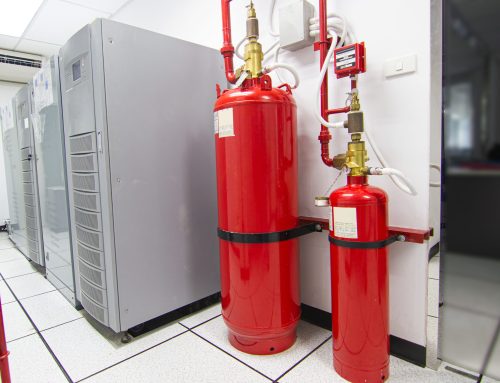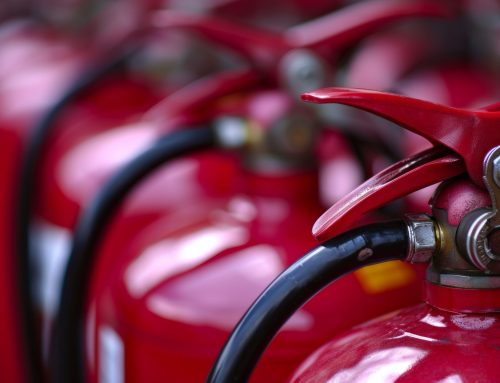10 Tips for Using a Fire Extinguisher
- Before using a fire extinguisher, sound the fire alarm and identify a safe evacuation route.
- Only use a portable fire extinguisher if the fire is confined to a small area.
- Make sure your extinguishers are located in easily accessible areas.
- Do not touch the plastic discharge horn on CO2 extinguishers—it becomes very cold and can damage skin.
- Do NOT use a fire extinguisher if your means of evacuation becomes compromised.
- Always keep an escape exit to your back.
- Class A and B extinguishers carry a numerical rating that indicates the size fire that it can to extinguish.
- Extinguishers are often found in corridors, inside very large rooms, immediately outside mechanical spaces, and mounted inside heavy equipment vehicles.
- Even if you only used a small amount of agent, you must report the extinguisher as used. Many extinguishers will no longer hold a charge after partial use.
- Fire extinguishers must be inspected, maintained, and hydrostatically tested routinely in accordance with NFPA 10.
How to Use a Fire Extinguisher
Before using a fire extinguisher, always read the instructions on the label. There are different kinds of extinguishers for different fires—if used incorrectly, they can cause the fire to spread, re-ignite, or even explode. Once you have sounded the fire alarm and confirmed a safe escape route, you may use a fire extinguisher from a safe distance to dowse the fire.
A good way to remember how to use a fire extinguisher is the acronym P.A.S.S:
Pull the pin in the handle
Aim the nozzle at the base of the fire
Squeeze the lever slowly
Sweep from side to side at the base of the fire
Portable Extinguisher Inspection, Testing and Maintenance
NFPA 10 standards require all fire extinguishers in the workplace to be inspected, tested, and maintained routinely.
Monthly: All extinguishers must be inspected monthly for damage, correct pressure, broken seals, proper condition of hose and nozzle, and documentation of inspections.
Annual: Mandatory annual inspections require inspectors to verify the extinguisher is fully pressurized, free from damage, and weighted appropriately. Annual inspections also require a pull test on the pin and replacing the seal as well as a dated inspection tag. If the extinguisher fails to meet these requirements, it must be replaced.
6 Year Maintenance: Extinguishers that store a pressurized agent must have the contents completely removed and refilled every 6 years. 6 year maintenance requires thorough inspection of the inside and outside and must be performed exactly 72 months after the manufacturing date.
Hydrostatic Testing: Extinguishers that store specialized chemicals such as Halon or dry chemicals must undergo hydrostatic tests every 12 years. CO2 units must be inspected and hydrostatically tested every 5 years.
Fire Systems, Inc. delivers, inspects, maintains, tests, and repairs all types of fire extinguishers.






